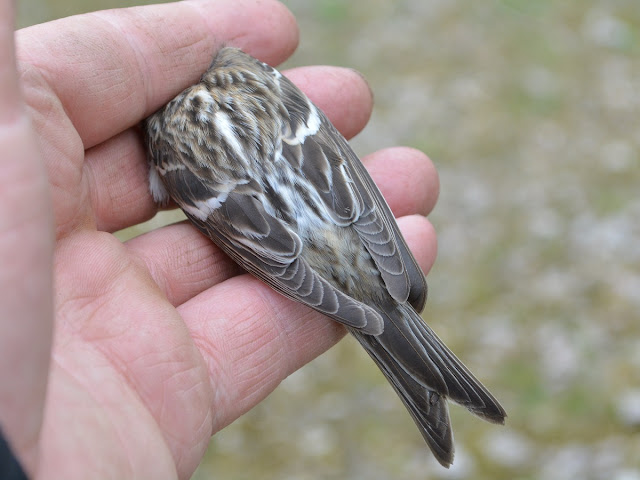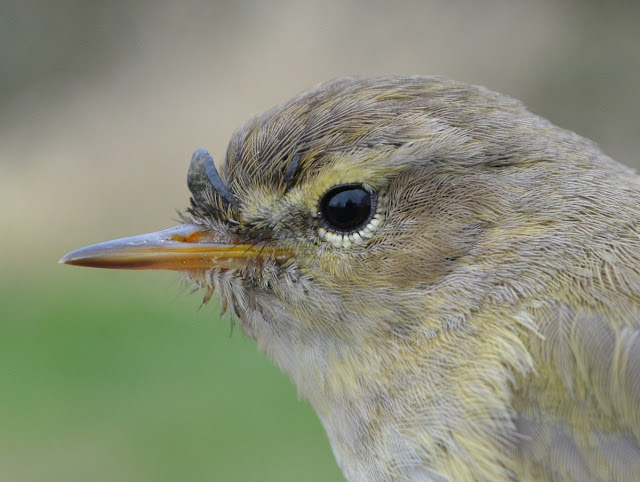Lesser Redpolls were the most numerous species with 37 new birds and 1 control being caught. The control Lesser Redpoll had been ringed at Clow Bridge in Lancashire last autumn, 41 km to the NE of Billinge. Willow Warbler was next in terms of numbers with 9 new birds and 6 retraps captured. It has been a good spring for Willow Warblers with 23 (15 new birds and 8 retraps from previous years) caught so far this month. Of these 21 were males and only 2 were females with the first male being caught on the 1st and the first female just over 3 weeks later, on the 23rd.
Other captures and sightings of note were as follows:
14th - 2 Siskins were ringed including a female with a wrinkled brood patch which indicates she had already made an early breeding attempt somewhere. I am not aware of any breeding sites near Billinge which makes this record all the more interesting. Is it a failed breeder on the move or could it be breeding nearby?
17th - A short, rain restricted ringing session didn't produce single bird but a late Fieldfare was seen flying east.
19th - A very quiet ringing session produced just 2 Lesser Redpolls but this was offset by a Woodlark seen flying north first thing followed by a couple of Tree Pipits later in the morning. Woodlark is a county rarity and this record, assuming it is accepted, will only be the 3rd record for the county.
23rd - The first Whitethroat of the spring was ringed and a female Blackcap was controlled. I have received the ringing details for the control Blackcap and it had been ringed at Stanford Reservoir in Northamptonshire, 162 km SE of Billinge, on 24th September last year.
 |
| The Whitethroat was carrying a passenger in the form of a tick under its left eye. |
 |
| The control female Blackcap. |






















